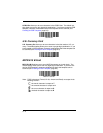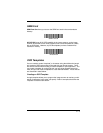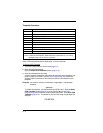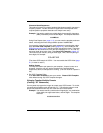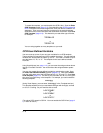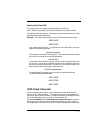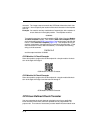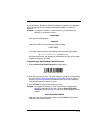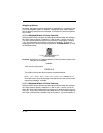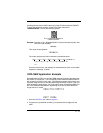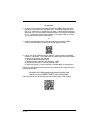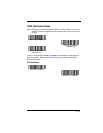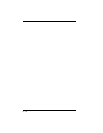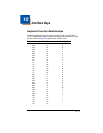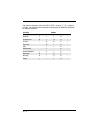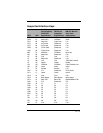
9 - 10
Weighting Options
By default, the check character computation is unweighted. It is possible to use
one of two weighted modulo 10 schemes. Weighting is often used to detect if
two neighboring characters are transposed, a common error when an operator
keys in data.
3-1-3-1 Weighted Modulo 10 Check Character
Starting with the check character and working backward through the message,
the image scanner applies a multiplier of 1, then 3, then 1, then 3, and so on.
This is the checking scheme used in many EAN•UCC symbologies, including
U.P.C. and Interleaved 2 of 5 (when a check digit is invoked). To apply this
weighting scheme, set the OCR check character to “0123456789x3x1” or scan
the following symbol:
Example: Scan the 3-1-3-1 Weighted Modulo 10 Check Character symbol. Also
enter the OCR template:
dddddddc
Then scan the string below:
01234565
The reader performs the check character computation below:
(0 x 3 + 1 x 1 + 2 x 3 + 3 x 1 + 4 x 3 + 5 x 1 + 6 x 3 + 5 x 1) modulo 10 = 0
Since the result is zero, the message is considered to be valid, so the reader
outputs the message: 0123456
2-1-2-1 Weighted Modulo 10 Check Character
Starting with the check character and working backward through the message,
the image scanner applies a multiplier of 1, then 2, then 1, then 2, and so on.
When the result of the multiplication is greater than 9, add both digits to the run-
ning sum. This is often referred to as the LUHN formula. One common applica-
tion of the LUHN formula is validate credit card numbers. This is the modulo 10
3-1-3-1 Weighted Modulo 10
Check Character



